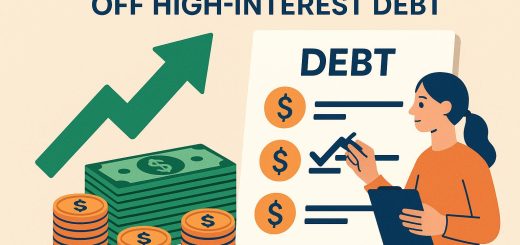The Snowball Method Explained
The snowball method is a widely recognized debt repayment strategy that prioritizes paying off debts from the smallest to the largest. This approach focuses on cultivating momentum and enhancing confidence by tackling the smallest debts first. It is particularly beneficial for individuals who require motivation to manage their financial responsibilities effectively. By systematically reducing outstanding debts, individuals often feel a sense of accomplishment that propels them towards further success in financial management.
How the Snowball Method Works
Implementing the snowball method involves a few strategic steps. Initially, you should compile a comprehensive list of all your debts, with the exception of your mortgage, organized by the outstanding balance from smallest to largest. Ignore the interest rates initially, as they are not the primary focus of this method. The core principle is to continue making minimum payments on all debts while concentrating any surplus funds on the smallest debt, thereby aiming to pay it off as soon as possible.
As soon as the smallest debt is eliminated, your focus should shift to the next smallest debt on the list. You should add the amount you were paying towards the previous debt to the minimum payment of the next smallest debt, thereby creating a “snowball” effect. This cumulative approach enables a gradual increase in the impact of your payments as you progress through the list of debts.
Example Scenario
To illustrate how the snowball method functions in a real-world context, consider the following debt profile:
- $500 credit card debt
- $1,200 medical bill
- $7,500 auto loan
In this scenario, you would make minimum payments on the medical bill and auto loan, while dedicating any additional resources to eradicate the $500 credit card debt. Once the credit card debt is fully paid, the process continues with a focus on the $1,200 medical bill. By adhering to this pattern, you effectively manage your debts, one at a time, moving from the smallest to the largest.
Why Use the Snowball Method?
The snowball method is underpinned by several benefits, primarily stemming from its psychological impact. Successfully eliminating smaller debts can provide a significant boost in confidence and foster a sense of achievement. This emotional uplift can serve as a powerful motivator, encouraging individuals to persist with their debt repayment efforts.
Additionally, the snowball method offers a clear and organized approach to debt management. It simplifies the process by addressing one target at a time, which can reduce the overall stress and anxiety often associated with managing multiple debts. This method breaks down the daunting task of debt repayment into manageable, achievable steps.
Additional Considerations
While the snowball method boasts several advantages, it is crucial to be mindful of its potential limitations. Notably, it does not take interest rates into account. This omission can lead to a scenario where, over time, the total interest paid may exceed that of other methods that prioritize interest rates. In some cases, adopting the debt avalanche method, which targets high-interest debts first, could result in cost savings.
When selecting a debt repayment strategy, it is important to consider your unique financial situation and motivation levels. The snowball and avalanche methods each have distinct strengths, and the optimal choice is contingent upon your personal circumstances. The snowball method’s emphasis on psychological wins may align well with individuals who thrive on consistent, measurable progress. In contrast, those who prioritize minimizing total interest payments might find the avalanche method more suited to their goals.
Another aspect worth considering is the impact of your debt repayment strategy on your long-term financial health. Beyond the reduction of debt amounts, these methods help instill financial discipline and encourage the development of positive financial habits. The repeated process of allocating funds towards debts can reinforce good budgeting practices and foster a more diligent approach to financial management.
Furthermore, the snowball method can serve as a foundation for further financial literacy and growth. As individuals witness the tangible impact of their efforts, they may be more inclined to seek out additional educational resources on personal finance. Over time, this proactive approach can lead to better decision-making and a more robust understanding of financial principles, potentially averting future financial challenges.
In summary, the snowball method is an empowering debt repayment strategy that leverages psychological principles to foster motivation and persistence. Its step-by-step approach provides clarity and simplicity in managing debts, making it an appealing option for many. However, it is important to weigh the benefits against potential drawbacks and consider whether interest rates or motivation are more significant factors in your personal financial journey. Ultimately, the choice between the snowball method and other strategies should align with your individual financial goals and circumstances, ensuring a path towards sustainable financial well-being.




